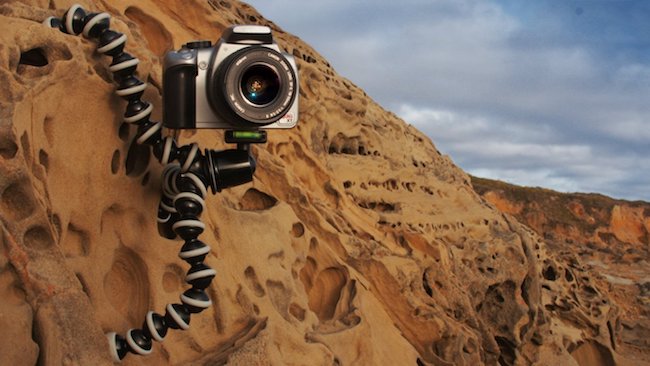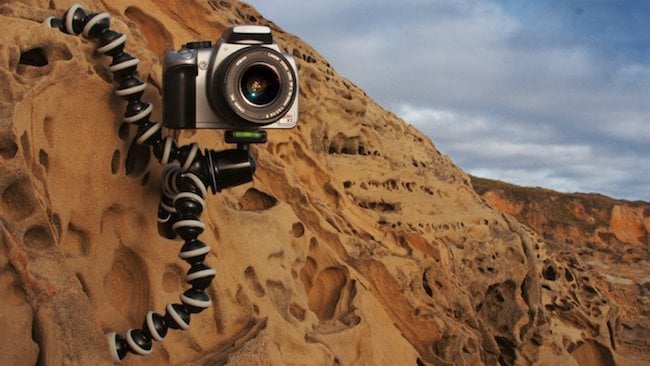
 Stable and secure: the extremely adaptable Gorilla Pod
Stable and secure: the extremely adaptable Gorilla Pod
The more mobile we get as content creators, the more cumbersome it becomes to bring a tripod along with us. But that doesn’t change the need for stable images and videos, so what is a shooter to do? Well, there are plenty of other ways to skin the stability cat.
Monopod
Now it’s kind of a cheat, but a monopod gives you the mobility option, while still maintaining the stable, locked down benefit of a tripod. And if you get one with retractable feet, so much the better. The monopod has become my de facto pod whenever I’m out and about.
GorillaPod
The beauty of the GorillaPod is that it comes in various sizes from pocket-sized to large enough to hold a DLSR and you can wrap it around just about anything, turning it into a point of stabilisation. Whether a tree limb, a fence post or whatever, suddenly it becomes your tripod and you can even use it as a handheld jig.
But what if you’re where you find yourself with nothing but your camera?
The string hack
This is a clever hack that enables a shooter to create four points of contact, simply using a long piece of string. Tie the ends of the string to your camera strap contacts and then drop the loop down to your feet and step into it. Pull tight and you have a tripod that can then be tied up and put in your pocket when you don't need it.
Pull your camera strap tight
Simply just pull your camera strap tight against the back of your neck, and you now have three points of contact. This is a good way to pan for some stable footage.
The Cradle Method
Cradling your camera into the elbow nook of your arm creates two points of stability and by simply swivelling on your waste, you can do some nice panning. Just don’t let go of your camera because you could end up dropping it before you realise it!
Use the camera itself
Most cameras have optical or digital image stabilisation and if given the choice, go with optical; it’ll give you better results. But if you have a 4K camera, so much the better. Shooting in 4K provides higher data rates and a wider amount of real estate to stabilise in post and output in 1080p. But keep in mind that this could cause motion blur, and so you’ll need to up the shutter speed to compensate. The other option is to shoot in slow motion. If sound doesn’t matter and there’s not a lot of camera or subject movement to worry about, it’s a nice way to smooth out the image.
Fix it in post
Warp Stabilizer in Adobe Premiere can work wonders when used sparingly. Don’t overdo it.
So there you go. Seven ways to get stability to your image when you don’t want to carry a tripod! By using this tricks, you’ll be surprised how often you’ll decide to just leave that tripod at home when you’re running and gunning!
Tags: Production


Comments